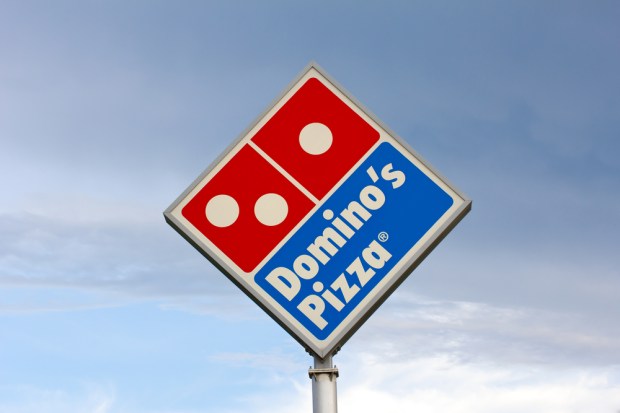Domino’s To Deliver Pizza To 150,000 Non-Traditional Locations

Domino’s Pizza announced news on Monday (April 16) that as of today, more than 150,000 Domino’s Hotspots are now active nationwide, enabling customers to receive delivery orders in locations that don’t have traditional addresses — like a park, sports field or a beach.
In a press release, Domino’s said its stores located around the U.S. chose the Domino’s Hotpots, which are new locations where drivers can meet customers to provide curbside delivery of orders.
“We listened to customers and their need for pizza delivery to locations without a traditional address,” said Russell Weiner, president of Domino’s USA, in a press release announcing the new initiative. “We know that delivery is all about convenience, and Domino’s Hotspots are an innovation that is all about flexible delivery options for customers.”
The pizza chain said the Domino’s Hotspots options are available online-only and for prepaid orders on dominos.com and in mobile apps. Once a customer’s location has been determined, local Domino’s Hotspots that are available for delivery will appear on a map for customers to select. Customers can provide information for the driver to find them at checkout. They will then receive a text message alert about the progress of their delivery, including a final text that gives the estimated arrival time of the driver to hand off the pizza and other food they have ordered.
“Now customers spending time at some of our new Domino’s Hotspots locations, like Tommy Lasorda Field of Dreams in Los Angeles or even next to the James Brown statue in Augusta, Georgia, can have a pizza conveniently delivered to them, thanks to our innovative Domino’s Delivery Hotspots,” Weiner noted in the report.
Domino’s has long embraced new technologies, viewing the advancements as playing a major role in food delivery in the future. In an interview with TheStreet.com earlier this year, Domino’s Pizza’s CEO Patrick Doyle predicted more voice orders from customers and deliveries from autonomous cars. “I think the one thing you will see change over the next three to five years is I think you will see more and more people using natural voice to place orders as opposed to thumbing things into their screens,” Doyle said.
